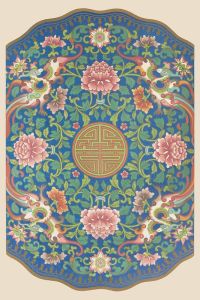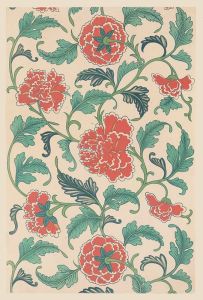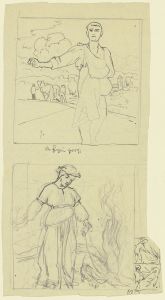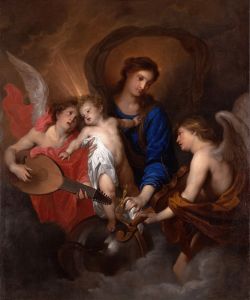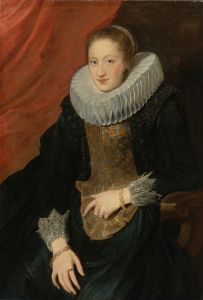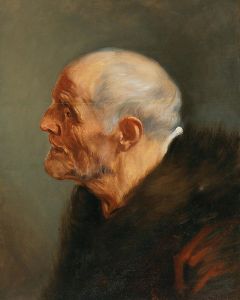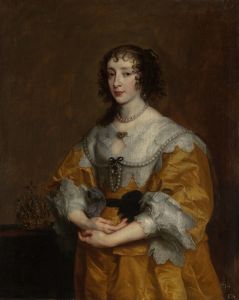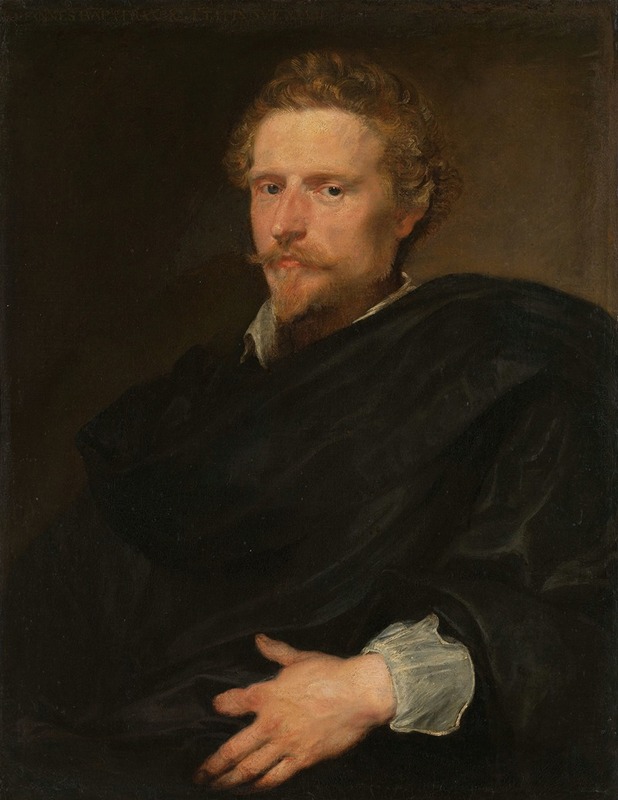
Portrait of a Man
A hand-painted replica of Anthony van Dyck’s masterpiece Portrait of a Man, meticulously crafted by professional artists to capture the true essence of the original. Each piece is created with museum-quality canvas and rare mineral pigments, carefully painted by experienced artists with delicate brushstrokes and rich, layered colors to perfectly recreate the texture of the original artwork. Unlike machine-printed reproductions, this hand-painted version brings the painting to life, infused with the artist’s emotions and skill in every stroke. Whether for personal collection or home decoration, it instantly elevates the artistic atmosphere of any space.
"Portrait of a Man" is a painting by the renowned Flemish Baroque artist Anthony van Dyck, who was a leading portraitist of the 17th century. Van Dyck was born in Antwerp in 1599 and became one of the most prominent painters of his time, known for his sophisticated and elegant portraits. He was a student of Peter Paul Rubens, another giant of Baroque art, and his influence is evident in van Dyck's work.
The painting "Portrait of a Man" exemplifies van Dyck's skill in capturing the character and presence of his subjects. While specific details about the sitter in this portrait are not well-documented, van Dyck's portraits often depicted members of the aristocracy, wealthy merchants, or notable figures of his era. His ability to convey the personality and status of his subjects made him a sought-after portraitist across Europe.
Van Dyck's technique in "Portrait of a Man" showcases his mastery of color, composition, and the play of light and shadow. The subject is typically rendered with a sense of dignity and poise, characteristic of van Dyck's style. The artist's use of a soft, yet precise brushwork allows for a realistic depiction of textures, such as the fabric of the clothing and the sitter's skin. This attention to detail helps to create a lifelike representation that engages the viewer.
The background of the painting is often understated, serving to highlight the subject without distraction. Van Dyck frequently employed a dark or neutral background to bring the focus onto the sitter's face and attire, a technique that enhances the three-dimensionality of the figure. This approach also reflects the influence of his mentor, Rubens, while also showcasing van Dyck's unique style.
Van Dyck's portraits are noted for their psychological depth, capturing not just the physical likeness but also the inner life of the subject. This quality is evident in "Portrait of a Man," where the sitter's expression and posture suggest a narrative or personal story, inviting viewers to ponder the identity and life of the individual portrayed.
Throughout his career, van Dyck worked in various European cities, including Antwerp, London, and Genoa. His time in England was particularly significant, as he became the principal court painter to King Charles I. This position allowed him to paint numerous portraits of the royal family and the English nobility, further cementing his reputation as a leading portrait artist.
"Portrait of a Man" is a testament to van Dyck's enduring legacy in the art world. His portraits continue to be celebrated for their elegance, technical skill, and ability to capture the essence of their subjects. Today, his works are housed in major museums and collections worldwide, where they are studied and admired by art historians and enthusiasts alike.
In summary, Anthony van Dyck's "Portrait of a Man" is a fine example of his portraiture, reflecting the artist's exceptional ability to blend technical prowess with a deep understanding of human character. The painting remains a significant piece within the context of Baroque art and continues to be appreciated for its artistic and historical value.






![Tora-no-mon-gai; Aoi Hill, Outside the Tiger Gate [Tora-no-mon]](/imgs/213040/s/ando-hiroshige-toranomongai-aoi-hill-outside-the-tiger-gate-toranomon-6629cde0.jpg)


